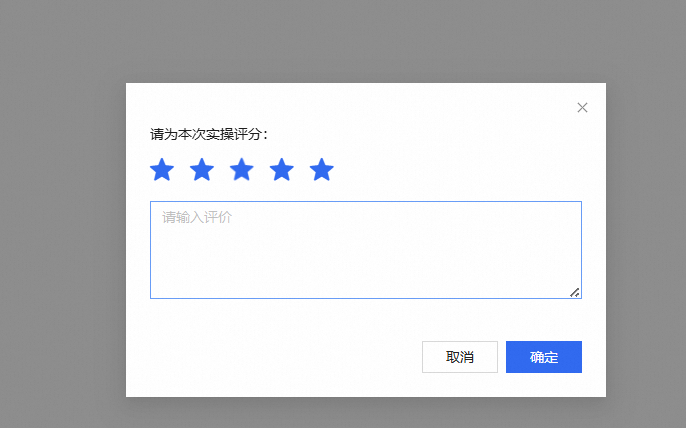基于 PAI 平台的分割模型 Yolov8m-Seg 的在线训练与本地部署应用于缺陷检测
利用阿里云平台中 PAI 平台(原机器学习平台)对 Yolov8m-Seg 目标分割模型进行在线训练,通过制作数据集过程完成 VOC 格式数据集到 COCO 数据集转换,上传至阿里云 OSS 容器,完成在线训练,下载训练日志以及pt 模型文件,构建预测代码完成本地部署。
场景简介
利用阿里云平台中 PAI 平台(原机器学习平台)对 Yolov8m-Seg 目标分割模型进行在线训练,通过制作数据集过程完成 VOC 格式数据集到 COCO 数据集转换,上传至阿里云 OSS 容器,完成在线训练,下载训练日志以及pt 模型文件,构建预测代码完成本地部署。
背景知识
本实验需要理解 VOC 数据格式与 COCO 数据格式的异同,需要掌握 Python 语言,需要对深度学习训练过程与部署过程作一定了解。
实验室资源方式简介
进入实操前,请确保阿里云账号满足以下条件:
个人账号资源
使用您个人的云资源进行操作,资源归属于个人。
平台仅提供手册参考,不会对资源做任何操作。
确保已完成云工开物300元代金券领取。
已通过实名认证且账户余额≥0元。
本场景主要涉及以下云产品和服务:人工智能平台 PAI 与对象容器 OSS
本实验,预计产生资源消耗:约10.488元/小时,实验耗时预计<1小时。总计消耗<12元。
算力需求资源: ecs.gn7i-c8g1.2xlarge
规格:
GPU:1xA10
显存:1x24GB
CPU:8vCPU
内存:30GiB
如果您调整了资源规格、使用时长,或执行了本方案以外的操作,可能导致费用发生变化,请以控制台显示的实际价格和最终账单为准。
领取专属权益及开通授权
在开始实验之前,请先点击右侧屏幕的“进入实操”再进行后续操作

第一步:本次实验需要您通过领取阿里云云工开物学生专属300元抵扣券兑换本次实操的云资源,如未领取请先点击领取。(若已领取请跳过)
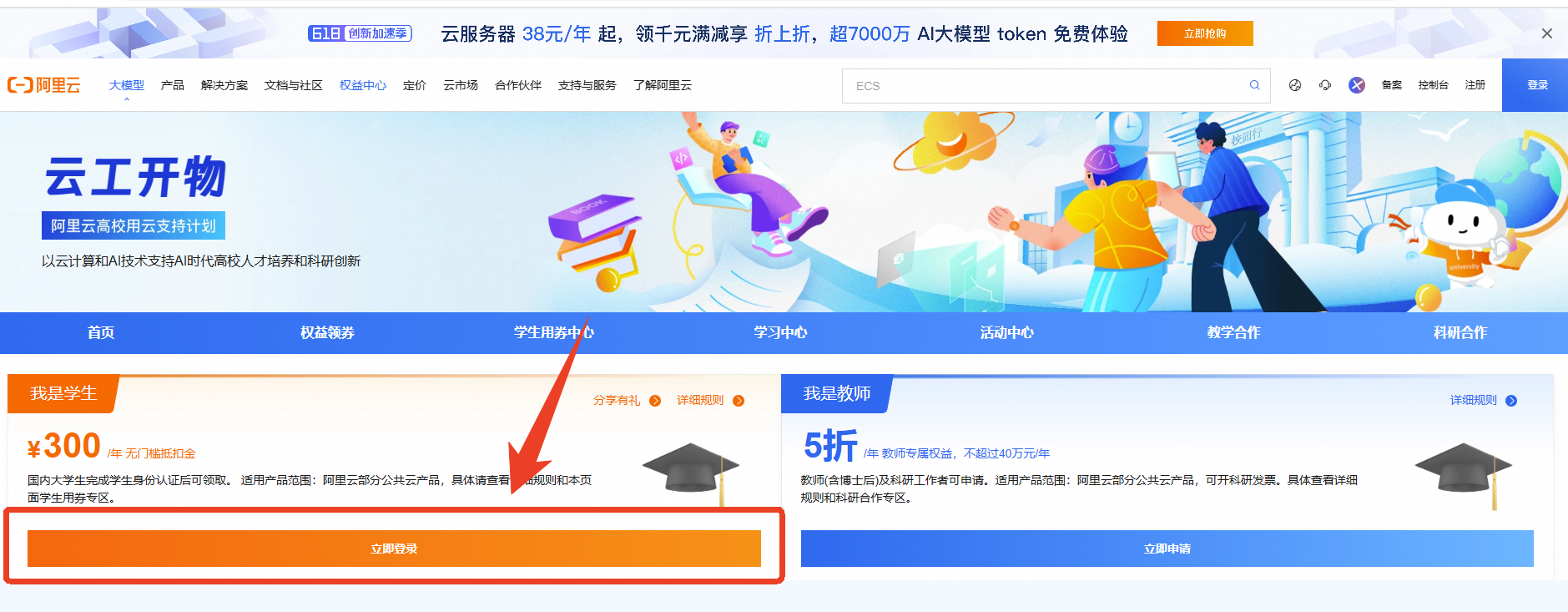
实验产生的费用优先使用优惠券,优惠券使用完毕后需您自行承担。
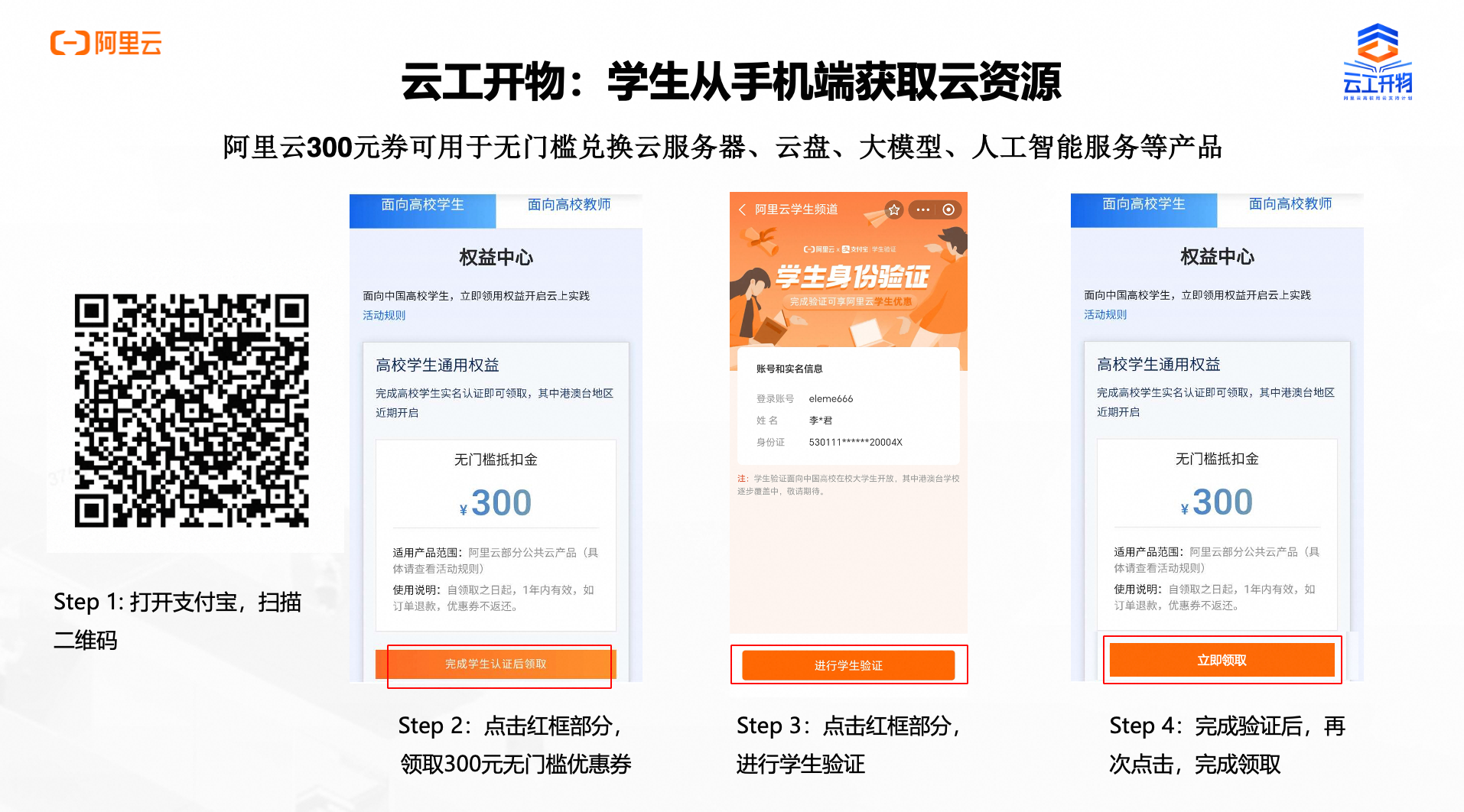
第二步:领取学生专属300元优惠券后,点击访问人工智能平台 PAI-点击“立即开通”,完成PAI平台开通与授权。

点击【立即开通】——【Model Gallery】——【YOLOv8m图像分割模型-中型】
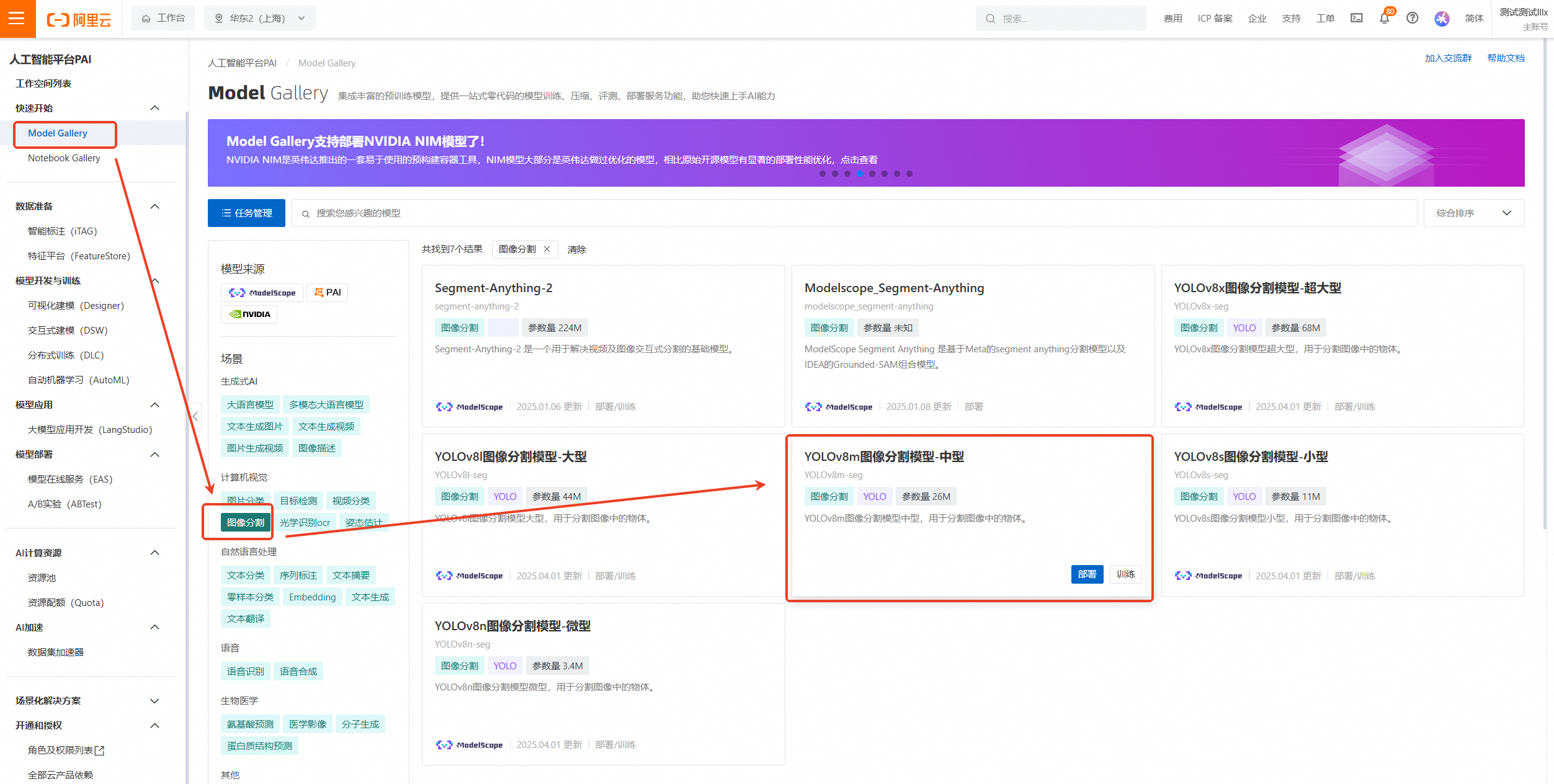
实验步骤
确保完成安装 Pycharm 社区版编辑器
配置 Python 解释器路径,本实验要求的版本 Python>=3.8
确保本地已配置好 pytorch 深度学习推理框架
磁瓦数据集是中国科学院自动所一个课题组收集的数据集,是“Saliency of magnetic tile surface defects”这篇论文的数据集。收集了 6种常见磁瓦缺陷的图像,并做了语义分割的标注。
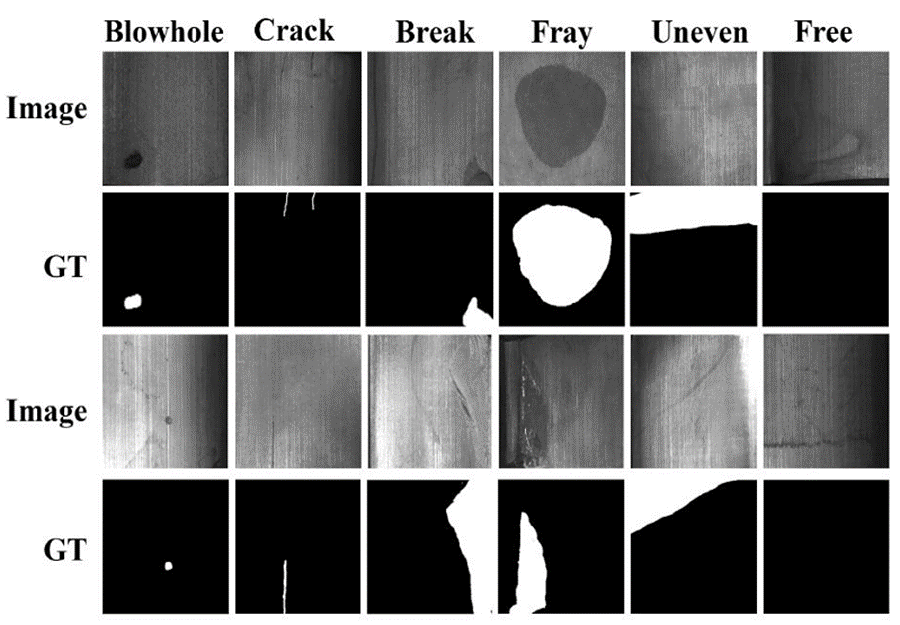
检查 VOC格式的磁瓦缺陷数据集
本地磁盘(E:)“中的搜索结果>VOCdevkit>VOC
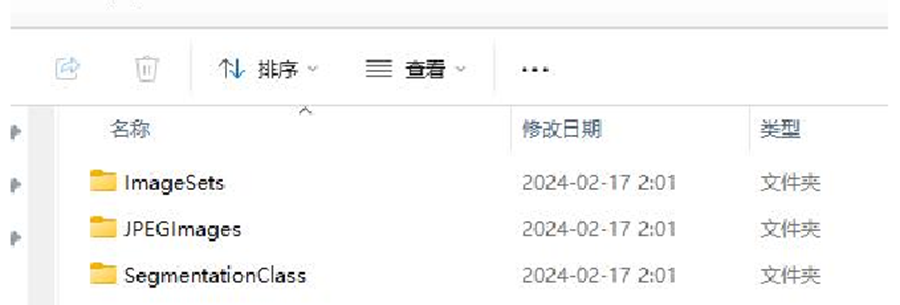
ImageSets:包含 txt 文件,用于存放数据集的划分信息,如训练集、验证集和测试集等。
JPEGImages:存放源图片,即用于训练和测试的图像文件。
SegmentationClass 和 SegmentationObject:分别存放语义分割和实例分割相关的图片。
检查 PAI 平台中需求的数据集格式
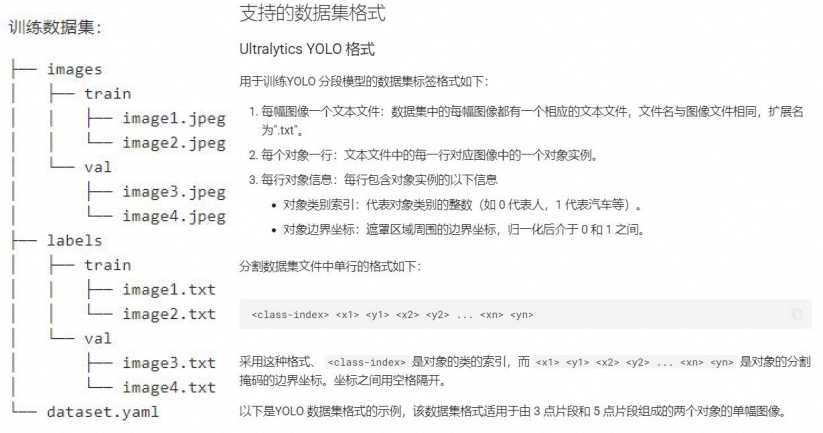
通过编写 Python 脚本代码完成数据集格式的转换
参考代码:
import os import cv2 import numpy as np # 颜色到标签的映射(根据您提供的颜色标签) color_to_label = { (0, 0, 0): 0, (128, 0, 128): 1, (0, 0, 128): 2, (128, 0, 0): 3, (0, 128, 0): 4, (128, 128, 0): 5 } def convert_to_yolo_segmentation(labels_image, height, width): """ 将分割标签图像转换为 YOLO segmentation 格式。 """ # 如果标签图像是灰度图,直接使用它作为标签图像 if len(labels_image.shape) == 2: gray_image = labels_image # 如果是灰度图像 # 将灰度图转换为 RGB 图像以便处理 labels_image = cv2.cvtColor(labels_image, cv2.COLOR_GRAY2RGB) else: gray_image = cv2.cvtColor(labels_image, cv2.COLOR_RGB2GRAY) # 找到所有轮廓 contours, _ = cv2.findContours(gray_image, cv2.RETR_EXTERNAL, cv2.CHAIN_APPROX_SIMPLE) yolo_annotations = [] # 遍历每个轮廓区域 for contour in contours: contour_points = contour.reshape(-1, 2) # 将轮廓点展平为二维数组 normed_points = [] # 获取每个轮廓的归一化坐标 for point in contour_points: x, y = point normed_x = x / width normed_y = y / height normed_points.append(f"{normed_x} {normed_y}") # 使用轮廓的第一个像素点来确定标签 first_pixel = tuple(labels_image[contour[0][0][1], contour[0][0][0]]) #获取第一个像素的 RGB 值 label = color_to_label.get(first_pixel, -1) # 根据 RGB 颜色值获取标签 # 如果找到了有效的标签(即标签不是-1),则将其添加到 annotations 中 if label != -1: yolo_annotations.append(f"{label} " + " ".join(normed_points)) return yolo_annotations def parse_segmentation_image(segmentation_image, file_name, split, output_path, height, width): """ 处理分割图像,提取 YOLO 格式标签并保存为文件。 """ # 读取标签图像 segmentation = cv2.imread(segmentation_image) # 获取 YOLO 格式标签 yolo_labels = convert_to_yolo_segmentation(segmentation, height, width) # 确保保存标签文件的目录存在 label_file = os.path.join(output_path, 'labels', split, f"{file_name}.txt") label_dir = os.path.dirname(label_file) # 获取文件夹路径 os.makedirs(label_dir, exist_ok=True) # 确保文件夹存在 # 保存标签文件 with open(label_file, 'w') as f: for label in yolo_labels: f.write(f"{label}\n") def process_data(): """ 处理整个数据集,将每个图像和标签转换为 YOLO 格式。 """ # 假设的输入输出路径 image_sets_dir = 'ImageSets/Segmentation' jpeg_images_dir = 'JPEGImages' segmentation_class_dir = 'SegmentationClass' output_dir = 'output_yolo' os.makedirs(output_dir, exist_ok=True) os.makedirs(os.path.join(output_dir, 'images', 'train'), exist_ok=True) os.makedirs(os.path.join(output_dir, 'images', 'val'), exist_ok=True) os.makedirs(os.path.join(output_dir, 'labels', 'train'), exist_ok=True) os.makedirs(os.path.join(output_dir, 'labels', 'val'), exist_ok=True) # 设置图像的尺寸(高度和宽度) height, width = 512, 512 # 假设图像尺寸为 512x512 # 读取 train.txt, val.txt 文件,选择训练集和验证集图像 for split in ['train', 'val']: split_file = os.path.join(image_sets_dir, f'{split}.txt') with open(split_file, 'r') as f: image_names = f.read().splitlines() for image_name in image_names: # 获取对应的图像和标签文件 image_file = os.path.join(jpeg_images_dir, f"{image_name}.jpg") segmentation_file = os.path.join(segmentation_class_dir, f"{image_name}.png") # 拷贝图像到新的目录 output_image_file = os.path.join(output_dir, 'images', split, f"{image_name}.jpeg") # 读取图像 image = cv2.imread(image_file) cv2.imwrite(output_image_file, image) # 处理分割标签并保存为 YOLO 格式 parse_segmentation_image(segmentation_file, image_name, split, output _dir, height, width) if __name__ == '__main__': process_data()完成格式转换后检查满足的格式,手动更改 dataset.yaml 文件,确保标签与代码段中 6-12 行中标签对齐(标签名可手动更改)

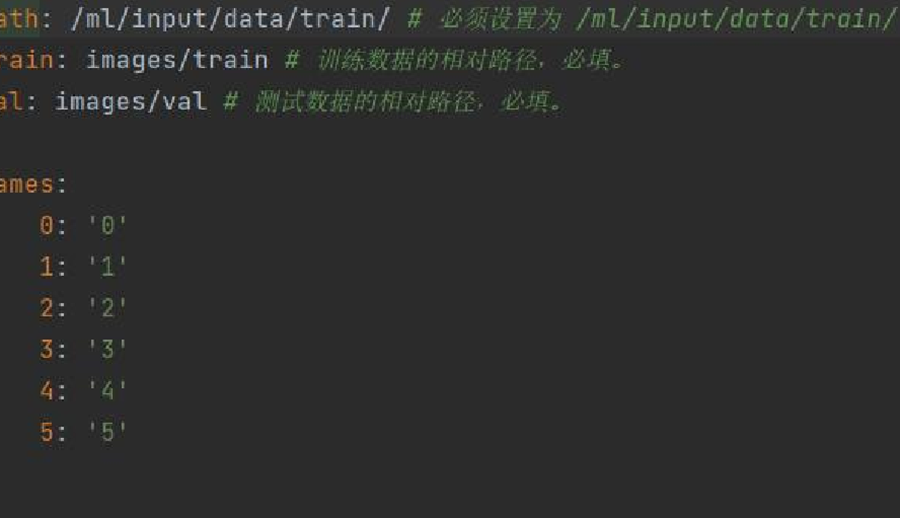
检查数据集无误后,开始上传数据集,在主界面中点击控制台,选择 OSS对象储存,点击 Bucket列表。
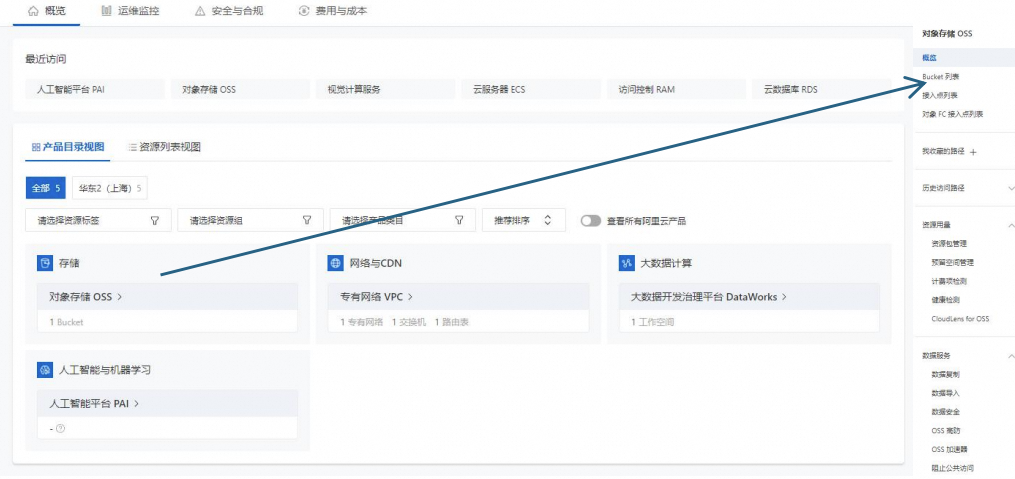
点击创建 Bucket,urqwirqr为实例名称,名称不可重复,这一步代表Bucket创建成功。

进入 Bucket,点击上传文件

将yolo_output(格式转换后输出的文件夹)文件夹拖入上传区域即可,根据后续提示完成上传即可

返回人工智能平台 PAI,选择数据集,在导入配置中选择上传的数据集 yolo_output,并新建 record文件夹作为后续的训练日志储存文件夹。
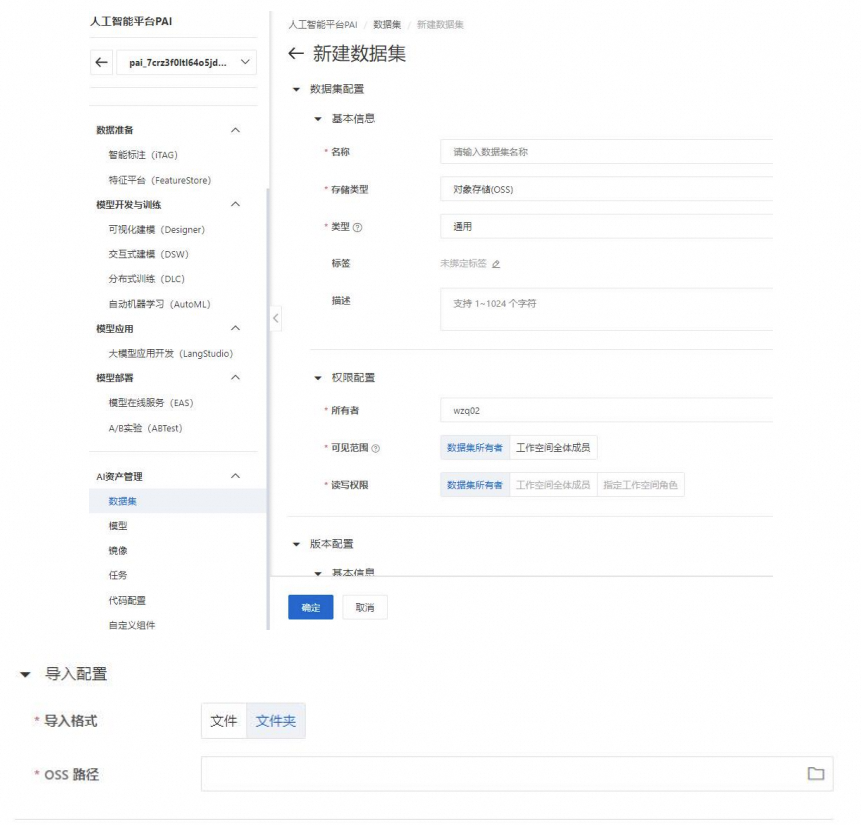
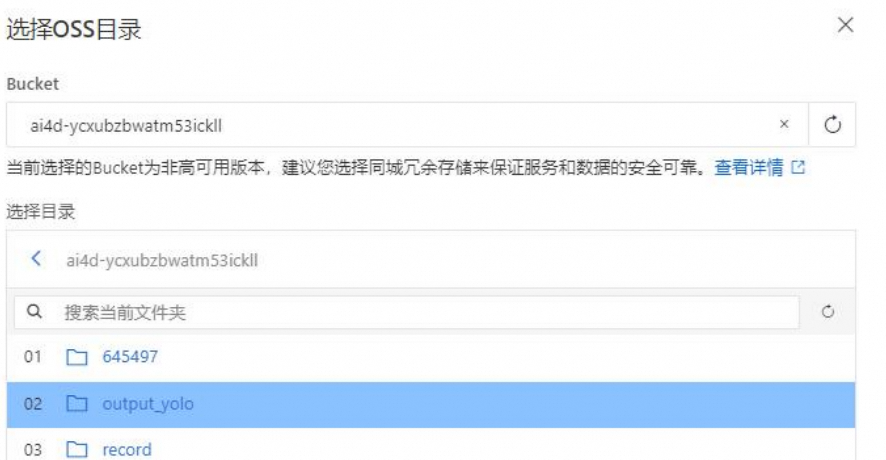
返回选择 model Gallery,选择图像分割,选择 YOLOv8M 中型,选择训练选项
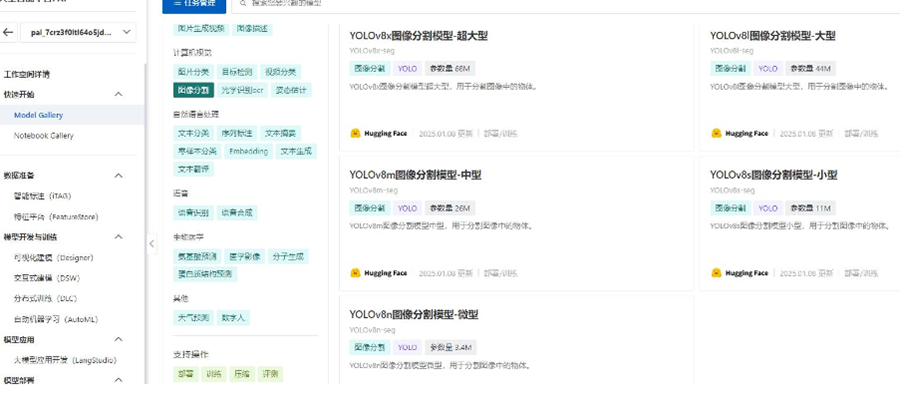
训练时长设定为 1 小时,训练数据集选择刚刚添加的数据集 yolo_output,模型输出选择为 record,资源配置如图所示。超参数配置如图所示。为了保证实验资源消耗在预估范围内,注意批次配置,时间配置,资源配置与图中达到一致。
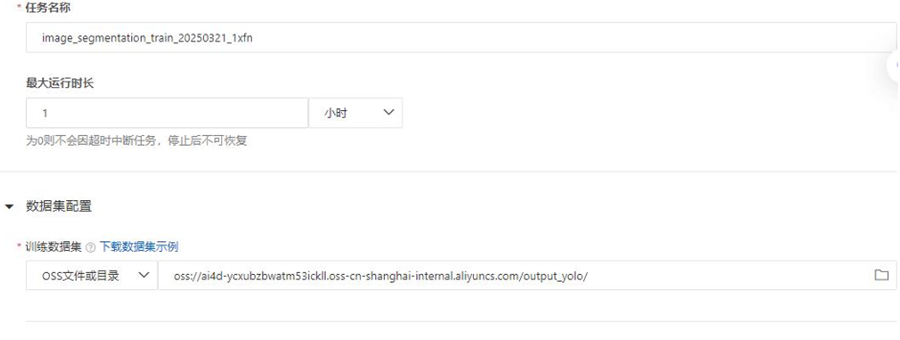
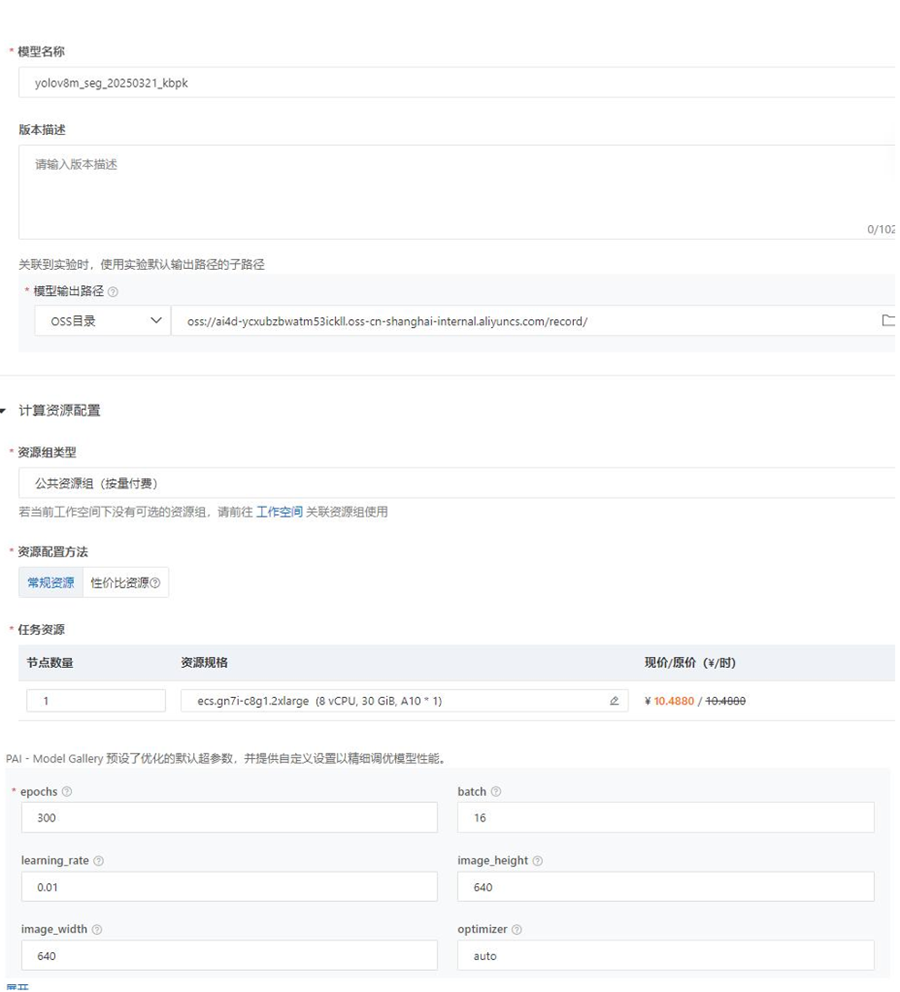
开始训练
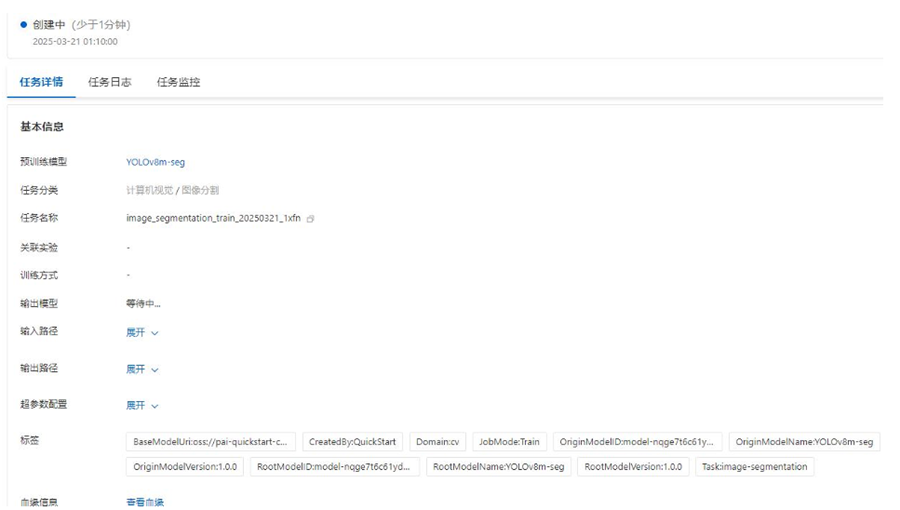
完成训练后,在 record中找到训练日志
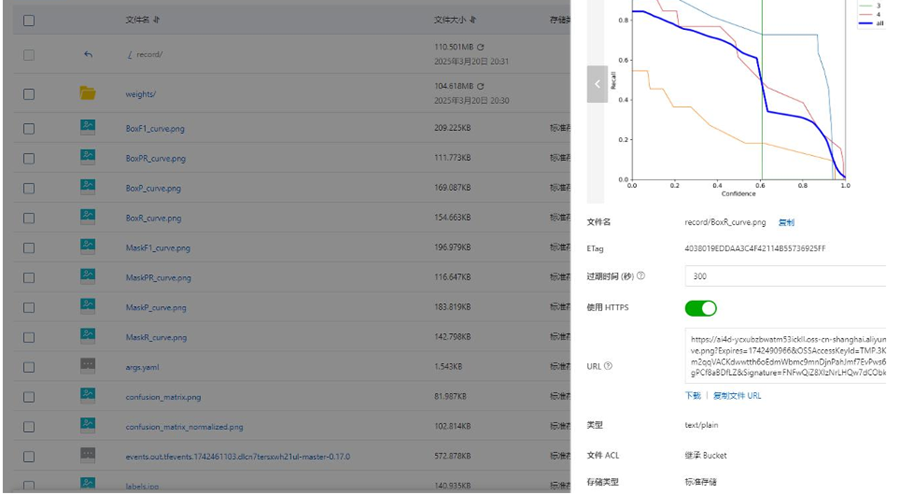
在 weight 文件中找到 best.pt 文件作为权重文件,点击下载。需要注意,下载后的格式为 zip,请手动重命名为.pt 格式

打开 Pycharm编辑器,创建项目,配置 python环境,将该 pt模型放置与 main主要预测代码同一目录下,main代码参考如下:
from ultralytics import YOLO import os import cv2 # 加载模型 model = YOLO('best.pt') # 确保模型任务类型为 'segment' if model.task != 'segment': raise ValueError("The model is not a segmentation model.") def predict_images_in_folder(model, input_folder, output_folder): # 获取文件夹中的所有图片文件 for filename in os.listdir(input_folder): if filename.endswith(".jpg") or filename.endswith(".jpeg") or filename.endswith(".png"): img_path = os.path.join(input_folder, filename) output_path = os.path.join(output_folder, filename) # 读取图片 img = cv2.imread(img_path) # 使用 model.predict 进行推理(分割任务) results = model.predict(img) # 对图像进行推理 # 获取并保存带预测框的图像 result_img = results[0].plot() # 获取带框的图像 cv2.imwrite(output_path, result_img) # 保存带框的图像 print(f"Processed {filename}, saved results to {output_path}") # 如果需要保存分割掩膜 # 示例用法 input_folder = "data/images/train"#待检测图像输入 output_folder = "res"#检测后的输出文件夹路径 predict_images_in_folder(model, input_folder, output_folder)创建输出文件夹,运行代码,完成预测
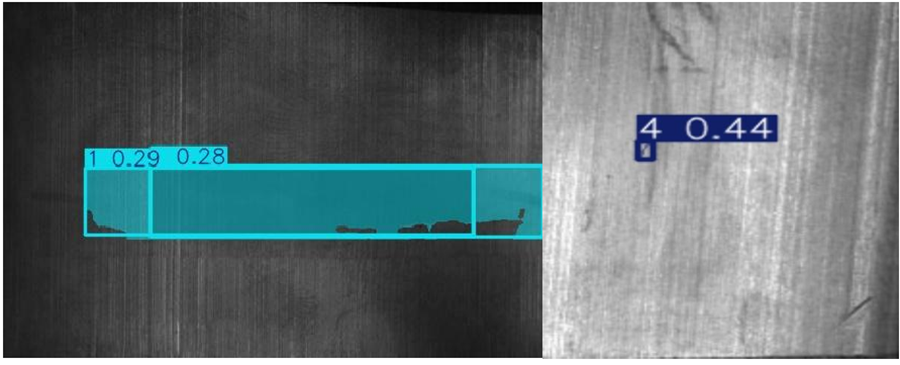
实验资源释放
在完成试验后,尤其注意释放掉训练资源,选择停止后进行删除操作,如完成训练,则直接进行删除操作,并在控制台中检查容器 OSS 是否释放以及资源配置是否释放。
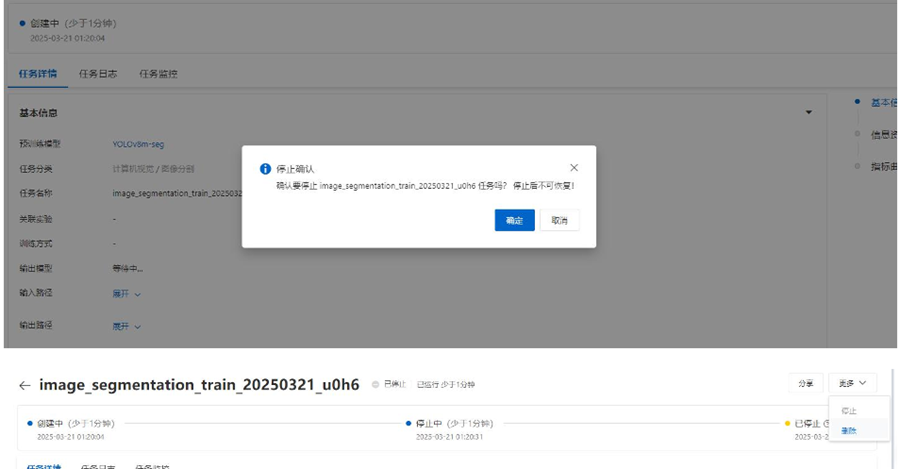
关闭实验
在完成实验后,点击 结束实操
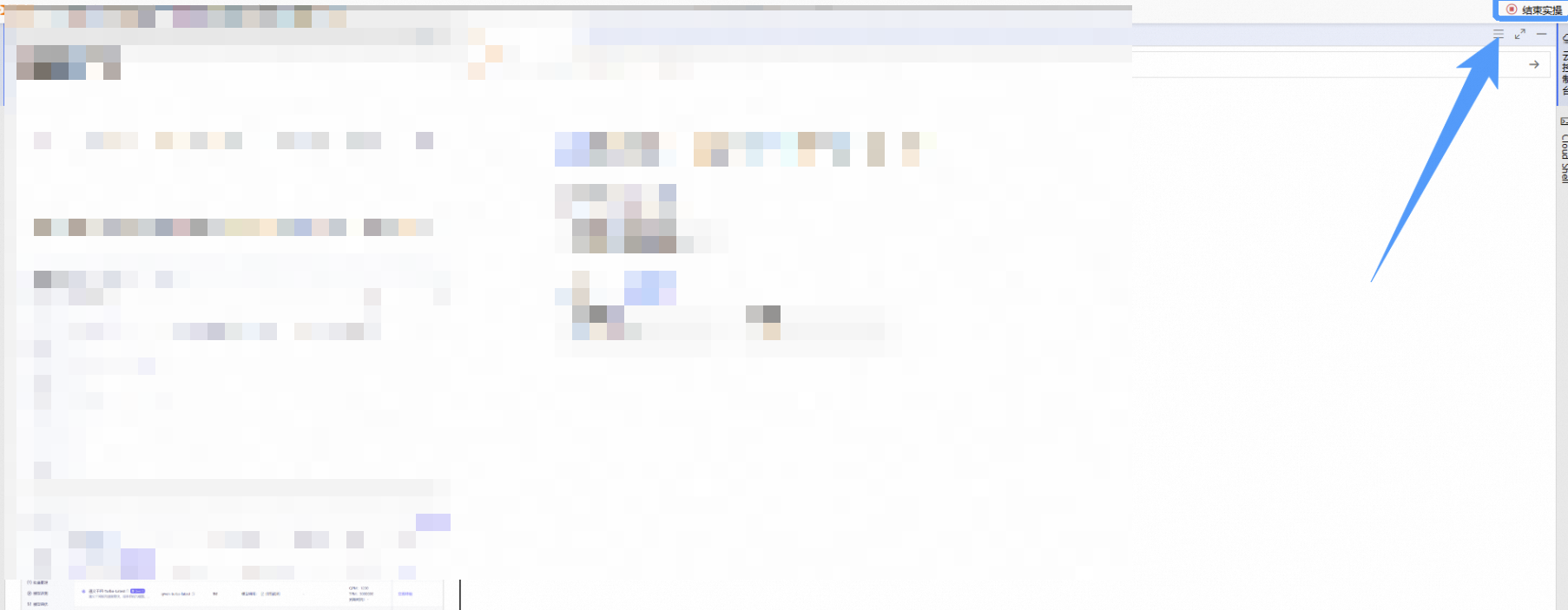
点击 取消 回到实验页面,点击 确定 跳转实验评分
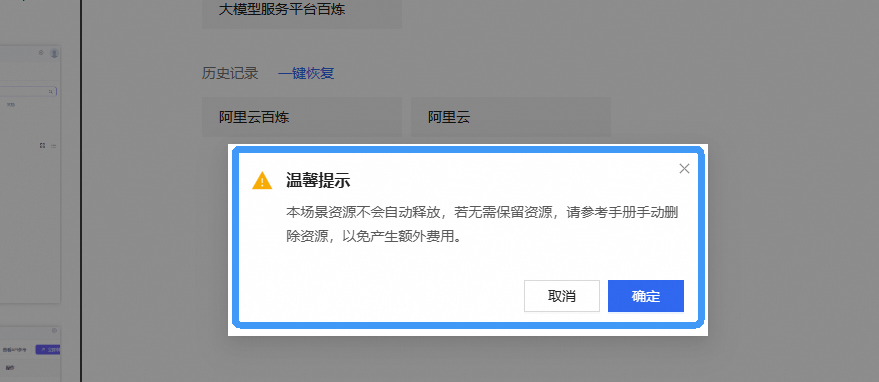
请为本次实验评分,并给出您的建议,点击 确认,结束本次实验
